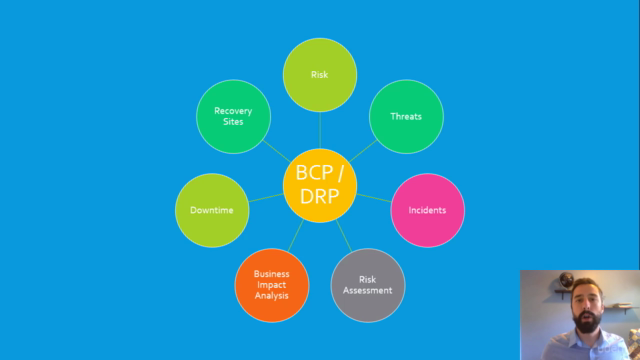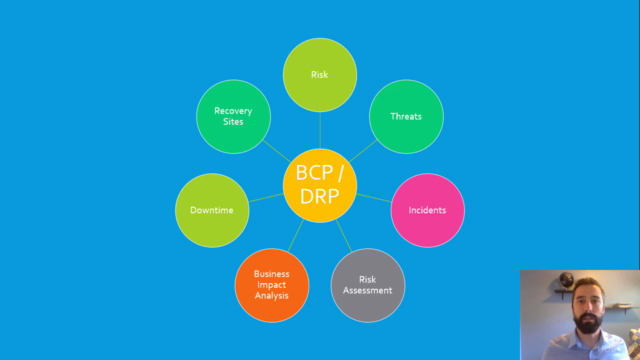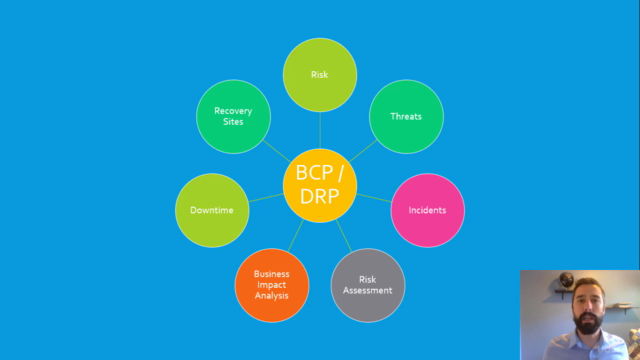A Brief Guide to Business Continuity and Disaster Recovery

Why take this course?
Course Title: A Brief Guide to Business Continuity and Disaster Recovery 🚀
Course Headline: Master the Art of Resilience with Our Comprehensive Course on Risk Management, Business Impact Analysis, and More! 🛡️
Course Description:
Welcome to "A Brief Guide to Business Continuity and Disaster Recovery Plans" – an essential course for all employees, particularly business owners and decision-makers. In a world where unexpected events can disrupt the smoothest of operations, understanding how to prepare is not just beneficial; it's imperative.
Why Take This Course? 🎓
This online course will guide you through the critical aspects of business continuity and disaster recovery planning. You'll learn what these plans entail, why they are crucial for your organization, and how to develop effective strategies that can minimize downtime and reduce the impact of unforeseen incidents.
What You'll Learn:
- Understanding Risks and Threats: Identify potential risks and threats that could affect your business operations. 🚨
- Risk Assessment and Business Impact Analysis: Learn how to evaluate the potential effects of disruptions on your business and prioritize recovery efforts effectively. 🎫
- Business Continuity Planning (BCP): Discover the steps to create a comprehensive plan that ensures your business can maintain operations during and after a disruptive event. ✅
- Disaster Recovery Planning (DRP): Explore the processes and procedures necessary to restore your IT systems and infrastructure quickly and efficiently following a disaster. 🖥️
- Preparing for the Unexpected: Gain insights on how to maintain operational stability by preparing for various disaster scenarios. 🌪️
Course Highlights:
- Real-World Scenarios: Learn through case studies and real-world examples that illustrate the importance of having solid business continuity and disaster recovery plans in place. 🌍
- Step-by-Step Guidance: Follow a structured approach to creating your own BCP and DRP tailored to your specific business needs. 📐
- Expert Instruction: Benefit from the expertise of Michael Biocchi, an experienced instructor with a deep understanding of risk management and strategic planning. 👨🏫
- Actionable Tools and Templates: Receive practical tools and templates to help you develop your plans with confidence. 🛠️
Who Is This Course For?
- Business owners who want to protect their assets and ensure business continuity.
- Managers responsible for developing or overseeing business continuity and disaster recovery plans.
- IT professionals seeking to enhance their knowledge of disaster recovery strategies.
- Any employee interested in contributing to the resilience of their organization.
Take the Next Step Towards Business Resilience! 🌟
Don't wait for a crisis to strike. Equip yourself and your team with the knowledge and skills needed to navigate through adversity with confidence. Enroll in "A Brief Guide to Business Continuity and Disaster Recovery Plans" today and safeguard your business against the unpredictable future! 🛡️💼
Course Gallery




Loading charts...
Comidoc Review
Our Verdict
A Brief Guide to Business Continuity and Disaster Recovery is an introductory course offering a solid foundation on the subject. The instructor's expertise adds value, yet inconsistent audio quality and minimal visual aids may impact overall learning experience negatively for certain learners. Despite its basic nature, this course covers essential terms, risks, and real-world examples that would benefit beginners or professionals seeking foundational knowledge in business continuity planning.
What We Liked
- Well-structured course covering key concepts of Business Continuity and Disaster Recovery
- Instructor's knowledge and experience add credibility to the content
- Content is understandable and clear, using real-world examples for explanations
- Highlights the importance of risks, threats, and business impact analysis
Potential Drawbacks
- Occasional audio quality issues affecting clarity
- Lack of visual aids like diagrams or graphics to support understanding
- Course content is basic and generic, with room for improvement in complexity
- Some students may desire templates for implementation